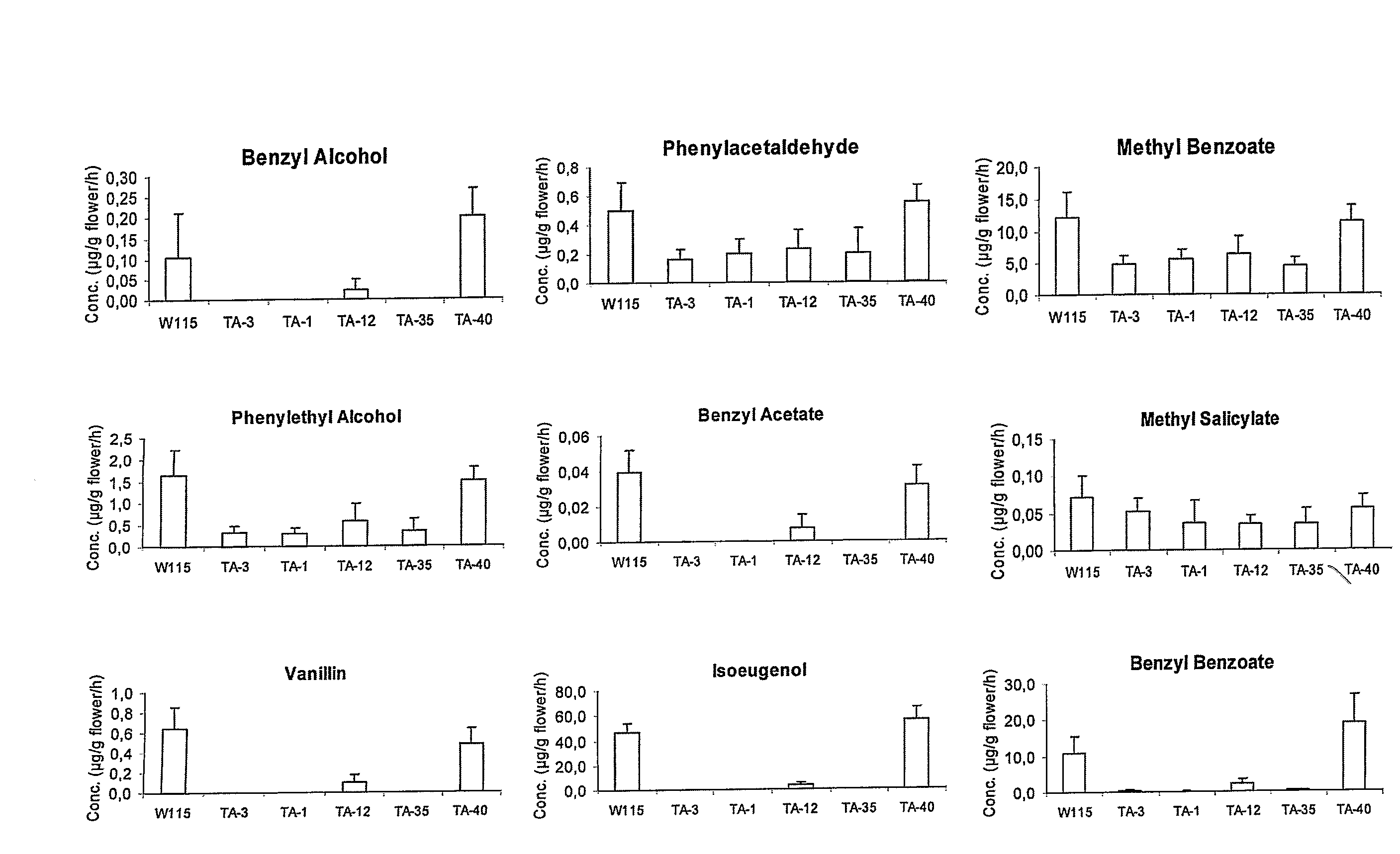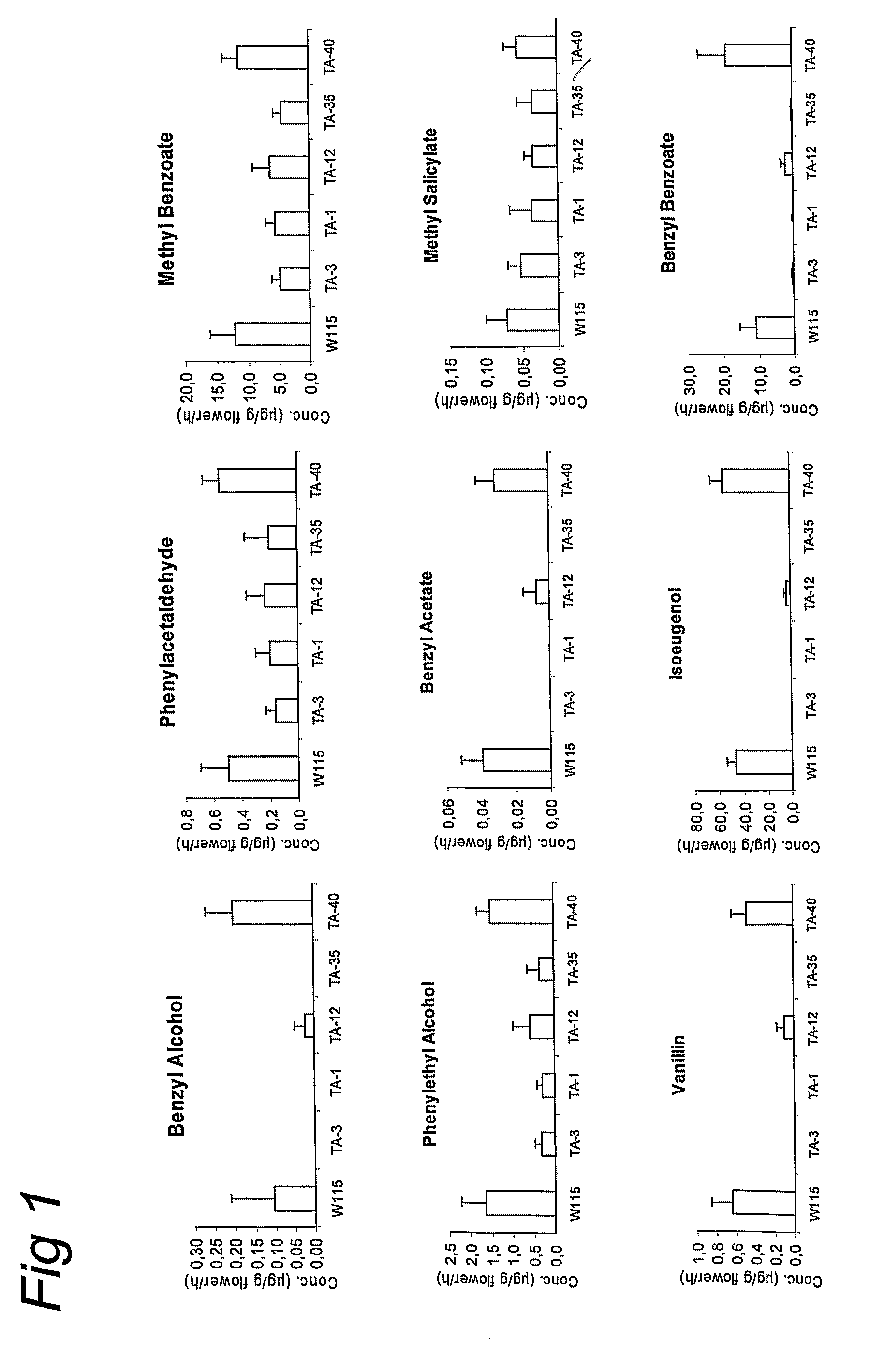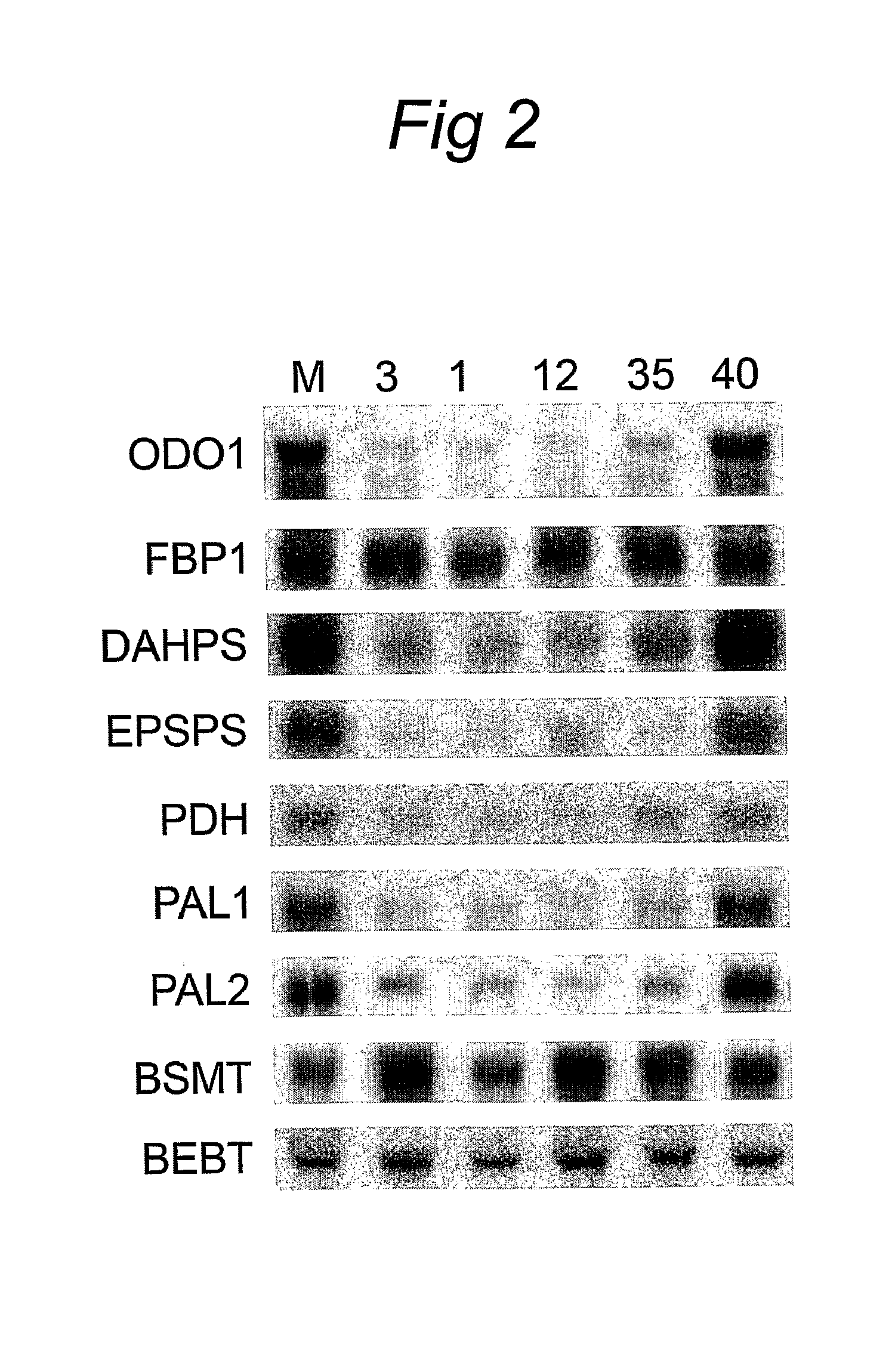Novel Regulatory Protein
a technology of myb and regulatory proteins, applied in the field of myb regulatory proteins in plants, can solve the problems of limited knowledge about molecular and genetic processes, time-consuming and labor-intensive, and the inability to alter the taste of tomatoes by traditional breeding
- Summary
- Abstract
- Description
- Claims
- Application Information
AI Technical Summary
Benefits of technology
Problems solved by technology
Method used
Image
Examples
example 1
Identification and Expression of a Transcription Factor Involved in Floral Scent Regulation in Petunia
[0053]To identify components involved in floral scent regulation in Petunia, a targeted transcriptomics approach was used. The transcriptome of flowers that were scenting were compared with that of flowers that were just about to scent and with flowers of Petunia cultivars that do not scent, using a dedicated, highly specific microarray. Transcription factors with increased transcript levels just before scenting and very low transcript levels in non-scenting Petunias were selected. One transcription factor, ODO1 (ODORANT 1), is described in detail here.
[0054]Consistent with a role in regulating floral scent, ODO1 transcript levels increased between noon and 14.00 h at the onset of volatile benzenoid emission. Transcript levels of ODO1 increased transiently and were back at their lowest level early the next morning. Expression of ODO1 was restricted to the tube and petals of the flo...
example 2
Characterisation of the Transcription Factor which is Involved in Floral Scent Regulation
[0055]Sequencing of ODO1 revealed that it encodes a putative protein of 294 amino acids (SEQ ID No. 1), with high homology to members of the R2R3-type MYB family, without a nuclear localisation signal. Though the N-terminal R2R3-domain (amino acids 1-128 of SEQ ID No. 1) contains the highly conserved motifs and amino acids presumably involved in DNA-binding to certain variable core motives and formation of a helix-turn-helix structure, the C-terminus has no homologous sequences in the Genbank database. Phylogenetic tree analyses puts ODO1 closest to a MYB from Pimpinella brachicarpa and two from Arabidopsis thaliana AtMYB42 and AtMYB85, of which the functions are unknown. Seventeen of the more variable amino acids of the R2R3-domain are conserved in these three proteins.
example 3
Silencing of the ODO1 Gene in Order to Establish its Role in the Floral Scent Regulation
[0056]To investigate the role of ODO1 in floral scent regulation, a transgenic approach was used. The expression in Mitchell of ODO1 was suppressed through RNAi. Since ODO1 is only expressed in the tubes and petals and not in any other tissue, we used a constitutive promoter for the RNAi construct. This promoter drives sequences encoding the C-terminus of ODO1, which showed no homology to other genes in the database, so that it would suppress accumulation of ODO1 transcripts. As a negative control we used the intron of ODO1 for a RNAi construct to transform the line Mitchell as well. Each independent transformant was analysed for ODO1 transcript levels in their flowers at 17.00 h when its transcripts are high in the parental Mitchell line. To rapidly investigate volatile production by individual flowers of each transgenic line, we used a targeted metabolomics approach as described in Verdonk et a...
PUM
| Property | Measurement | Unit |
|---|---|---|
| thickness | aaaaa | aaaaa |
| thickness | aaaaa | aaaaa |
| Time- | aaaaa | aaaaa |
Abstract
Description
Claims
Application Information
 Login to View More
Login to View More - R&D
- Intellectual Property
- Life Sciences
- Materials
- Tech Scout
- Unparalleled Data Quality
- Higher Quality Content
- 60% Fewer Hallucinations
Browse by: Latest US Patents, China's latest patents, Technical Efficacy Thesaurus, Application Domain, Technology Topic, Popular Technical Reports.
© 2025 PatSnap. All rights reserved.Legal|Privacy policy|Modern Slavery Act Transparency Statement|Sitemap|About US| Contact US: help@patsnap.com



